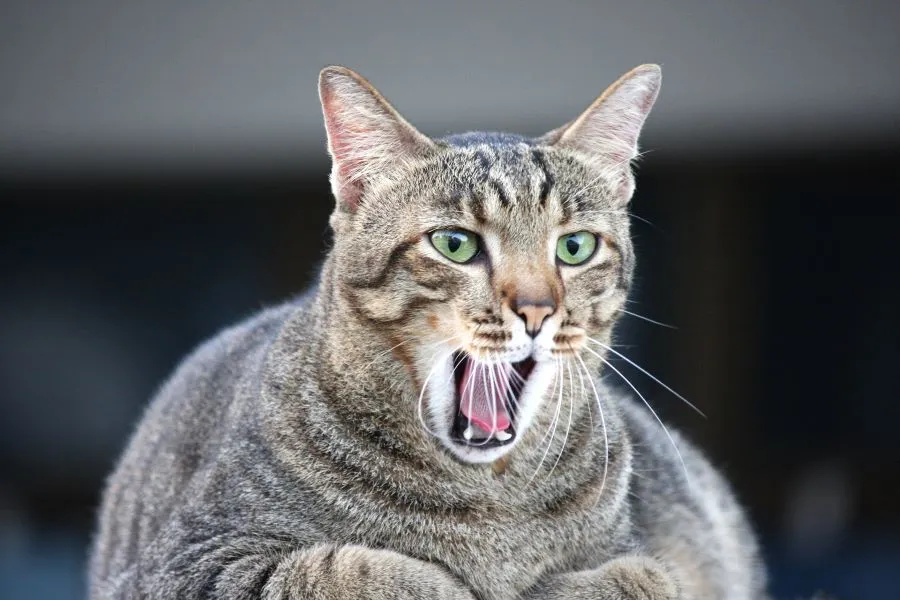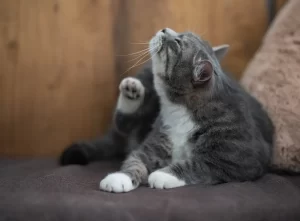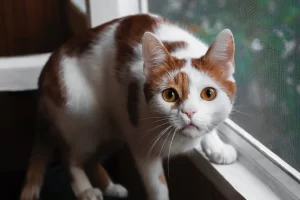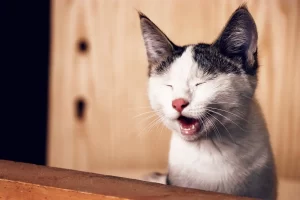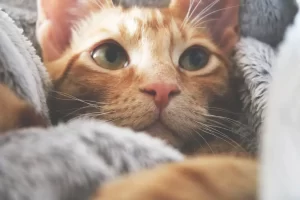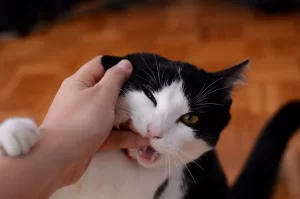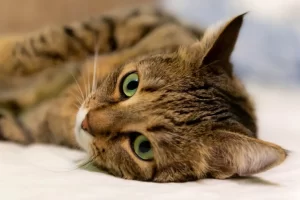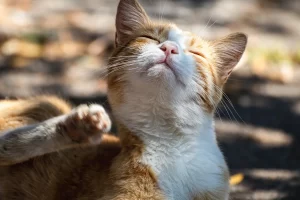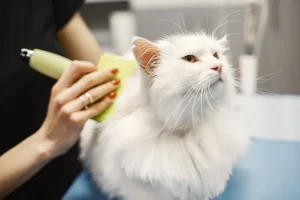Cat vomiting is a common issue that can be caused by a variety of factors, ranging from minor dietary issues to serious medical conditions. As a cat owner, it’s important to closely monitor your cat’s vomiting episodes and provide appropriate care. One important aspect that veterinarians often use as a diagnostic tool is the color and consistency of cat vomit. In fact, there are resources available, such as a cat vomit color chart, that can help identify potential underlying causes based on the appearance of the vomit. Understanding the significance of cat vomit color and consistency can aid in determining the appropriate management and treatment options for your feline friend. In this article, we will explore the diagnostic value of cat vomit color, red flags to watch out for, management techniques, and potential treatment strategies for cat vomiting.
Table of Contents
ToggleComplete Cat Vomit Color Chart
| Cat Vomit Color | Potential Indications/Causes |
|---|---|
| Yellow | Empty stomach, bile reflux, hunger, gastrointestinal issues, ingestion of grass or foreign material |
| Green | Bile reflux, digestive issues, ingestion of grass or plants, food intolerance or allergy |
| Brown | Partially digested food, blood from gastrointestinal tract, dietary changes, food intolerance |
| Dark Brown | Old blood, digested blood, bleeding from upper gastrointestinal tract, inflammation or ulceration |
| Red | Fresh blood, bleeding from mouth, esophagus, or stomach, gastrointestinal injury or disease |
| Pink | Blood mixed with saliva, bleeding from mouth or throat, oral or dental issues |
| White | Partially digested food, mucus, inflammation or irritation of the stomach or esophagus |
| Gray | Undigested food mixed with mucus or bile, gastrointestinal issues or motility disorders |
| Clear | Regurgitation of saliva or stomach contents, reflux, swallowing difficulties |
| Foam/Foamy | Excessive air or mucus in vomit, indigestion, irritation of the gastrointestinal tract |
| Orange | Bile mixed with food or digestive juices, dietary changes, liver or gallbladder issues |
| Black | Digested blood from upper gastrointestinal tract, ingestion of dark-colored substances, bleeding or injury |
| Purple | Ingestion of substances with purple dye or coloration, dietary changes, food intolerance |
| Watery | Excess fluid in vomit, related to hydration issues, underlying medical conditions |
| Fecal | Vomiting of fecal material, suggesting obstruction or serious gastrointestinal issue |
| Grains | Ingestion of grains or seeds, dietary habits, food intolerance |
| Foreign objects | Vomiting of ingested foreign objects, such as toys or hairballs, obstruction, ingestion |
| Undigested food | Vomiting of food that has not been properly digested, dietary changes, indigestion |
| Mucus | Excess mucus in vomit, suggesting inflammation or irritation of gastrointestinal tract |
| Mixed colors | Combination of underlying issues, ingestion of different substances, complex causes |
Related read: Decoding Cat Vomit Color
Understanding Cat Anatomy and Physiology, Including Vomiting
Understanding the anatomy and physiology of a cat’s digestive system is crucial in comprehending how vomiting occurs. The stomach of a cat is an important organ in the digestive process, characterized by its size, shape, and capacity for holding and digesting food. Gastric motility, which refers to the coordinated muscle contractions that propel food through the stomach, plays a vital role in preventing food from staying in the stomach for extended periods. Disruptions in gastric motility, such as due to gastrointestinal disorders or other underlying health conditions, can result in vomiting.
Stomach acid production is another key aspect of a cat’s digestive system. Stomach acid, also known as gastric acid, is responsible for breaking down food and killing potential harmful bacteria. However, an imbalance in stomach acid levels, such as excess production or reflux, can trigger vomiting episodes in cats. The gastroesophageal sphincter, a muscular ring that separates the stomach from the esophagus, plays a critical role in preventing the backflow of food and stomach contents. Dysfunction of this sphincter can contribute to vomiting in cats, allowing stomach contents to enter the esophagus and be expelled through the mouth.
The vomiting reflex is a complex process involving various neural and physiological mechanisms. It is triggered by a combination of signals from the brain, nerves, and muscles in response to different stimuli, such as irritation of the stomach lining, presence of toxins or foreign objects, or signals from the inner ear. Understanding the difference between regurgitation and vomiting is also important. Regurgitation is a passive process where undigested food is expelled from the esophagus, whereas vomiting is an active process involving forceful expulsion of stomach contents through the mouth.
The body has natural anti-emetic mechanisms that help protect the esophagus and oral cavity from the acidic and irritating effects of vomiting. These mechanisms include increased salivation, swallowing, and production of mucus in the mouth and throat. Additionally, feline anatomy variations, such as differences in the shape of the skull, length of the esophagus, and structure of the gastrointestinal tract, can also impact vomiting tendencies in cats. Factors such as age, breed, and individual variations in cats may also influence their susceptibility to vomiting, with kittens, senior cats, or certain breeds potentially being more prone to gastrointestinal issues.
Read more on different types of cat vomits.
Causes of Cat Vomiting: Dietary Issues, Gastrointestinal Disorders, Infections, Toxins, and more
Causes of cat vomiting can vary widely, ranging from common to uncommon reasons. Understanding these causes can help identify and address underlying issues that may be triggering vomiting episodes in cats.
- Dietary Issues: Cats can be sensitive to changes in their diet or consumption of inappropriate food items, which can lead to vomiting. This can include eating too quickly, overeating, ingesting indigestible objects (such as hairballs or foreign bodies), or consuming spoiled or contaminated food. But if the cat is vomiting and not eating, it may be because of other reasons and may require different treatments.
- Gastrointestinal Disorders: Cats can suffer from various gastrointestinal disorders that may cause vomiting, such as gastritis (inflammation of the stomach lining), gastroenteritis (inflammation of the stomach and intestines), inflammatory bowel disease (IBD), food allergies, or gastrointestinal obstructions.
- Infections: Infections, such as viral, bacterial, or parasitic infections, can also trigger vomiting in cats. Common examples include feline panleukopenia, feline viral upper respiratory infections, or gastrointestinal parasites like roundworms or hookworms.
- Toxins: Cats can be exposed to various toxins in their environment, including household chemicals, plants, medications, or toxic foods. Ingestion of these toxins can cause gastrointestinal irritation or toxicity, leading to vomiting as a defensive mechanism to expel the harmful substances.
- Metabolic or Systemic Issues: Cats with underlying metabolic or systemic conditions, such as kidney disease, liver disease, diabetes, or thyroid imbalances, can experience vomiting as a symptom of their underlying health issues.
- Stress or Anxiety: Cats are known to be sensitive to stress and anxiety, which can manifest in various ways, including vomiting. Changes in the environment, routine, or social dynamics, as well as other stressors, can trigger vomiting episodes in cats.
- Neurological Disorders: Certain neurological disorders, such as vestibular disease or central nervous system tumors, can affect the coordination and control of muscles involved in the digestive process, leading to vomiting.
- Medications or Treatments: Some medications or treatments, including chemotherapy, antibiotics, or certain pain medications, can cause gastrointestinal side effects in cats, including vomiting.
- Ingestion of Foreign Objects: Cats may ingest foreign objects, such as toys, hair ties, or plastic, which can cause gastrointestinal obstructions and trigger vomiting.
Vomit Red Flags: Identifying Serious Health Issues in Cat Vomit Colors
Certain colors or textures of cat vomit may indicate a medical emergency or a serious health condition that requires immediate veterinary attention. These “red flags” in cat vomit can be indicative of potentially life-threatening conditions and should not be ignored. Here are some examples:
- Blood in Vomit: Vomit that contains blood, whether it appears as red streaks or is mixed in with the vomit, is a significant red flag. It can indicate gastrointestinal bleeding, which may be caused by gastric ulcers, gastrointestinal tumors, or other serious conditions. Blood in vomit requires immediate veterinary attention as it can be a sign of a potentially life-threatening issue.
- Foreign Objects: If you notice any foreign objects in your cat’s vomit, such as pieces of plastic, fabric, or other materials, it can indicate that your cat has ingested something that is causing irritation or obstruction in the gastrointestinal tract. Ingestion of foreign objects can be dangerous and may require prompt veterinary intervention to remove the object and prevent further complications.
- Persistent Vomiting: If your cat is vomiting frequently, especially if it is persistent and not resolving on its own, it can be a sign of an underlying health issue that requires attention. Chronic vomiting can be indicative of gastrointestinal disorders, kidney disease, liver disease, or other systemic illnesses. It is important to consult with a veterinarian if your cat is experiencing persistent vomiting.
- Unusual Colors or Textures: Vomit that is unusually colored, such as dark brown, green, or blue, or has unusual textures, such as being excessively frothy or slimy, may indicate an underlying issue. It can be indicative of bile reflux, mucus production, or other abnormal digestive processes that may require further investigation.
- Other Signs of Illness: Cat vomit that is accompanied by other signs of illness, such as lethargy, loss of appetite, abdominal pain, or dehydration, can be concerning and may indicate a more serious health condition. These signs may be indicative of gastrointestinal disorders, organ dysfunction, infections, or other underlying issues that require veterinary evaluation.
Caring for Cat Vomiting: Home Management and Veterinary Care Guidance
Managing cat vomiting episodes at home can involve several steps to help your cat feel better and reduce the risk of further vomiting. However, it is important to note that home management should be done in consultation with your veterinarian, especially if your cat’s vomiting is persistent or accompanied by other signs of illness. Here are some general guidelines for managing cat vomiting at home:
- Withhold Food and Water: If your cat vomits, it is important to withhold food and water for a short period of time, typically 6-12 hours, to allow their stomach to settle. This can help reduce the risk of further vomiting and give their digestive system a chance to recover.
- Gradual Diet Changes: After the period of fasting, you can gradually reintroduce a bland diet to your cat. This can include boiled chicken or fish with rice, or a prescription diet recommended by your veterinarian. Avoid feeding your cat large meals and instead offer small, frequent meals to reduce the strain on their digestive system.
- Hydration: It is crucial to ensure that your cat remains adequately hydrated, even during the fasting period. You can offer small amounts of water frequently, or use ice chips or ice cubes to encourage drinking. If your cat is reluctant to drink, you can consult your veterinarian for guidance on administering fluids subcutaneously or orally.
- Avoid Trigger Foods: Identify and avoid any trigger foods that may be causing your cat’s vomiting. This can include foods that your cat has previously had an adverse reaction to or foods that are known to commonly cause gastrointestinal upset in cats, such as fatty or spicy foods.
- Reduce Stress: Cats are sensitive to stress, and stress can contribute to gastrointestinal issues. Create a calm and stress-free environment for your cat, provide them with a comfortable space to rest, and minimize any potential stressors in their environment.
- Monitor for Improvement or Worsening: Keep a close eye on your cat’s vomiting episodes and overall condition. If your cat’s vomiting persists, worsens, or is accompanied by other signs of illness, such as lethargy, loss of appetite, or dehydration, it is crucial to seek veterinary care promptly.
Treatment Options for Cat Vomiting
Treatment options for cat vomiting depend on the underlying cause of the vomiting and may vary based on the severity and duration of the condition. Here are some potential treatment strategies for common causes of cat vomiting:
- Dietary Management: If the vomiting is due to dietary issues, such as food allergies or intolerances, your veterinarian may recommend a change in your cat’s diet. This may involve switching to a hypoallergenic or prescription diet, eliminating certain ingredients, or feeding smaller, more frequent meals. It is important to follow your veterinarian’s dietary recommendations and monitor your cat’s response.
- Medications: Depending on the underlying cause of the vomiting, your veterinarian may prescribe medications to manage gastrointestinal symptoms. For example, anti-emetics such as metoclopramide or ondansetron may be used to reduce nausea and vomiting. Prokinetic medications, such as cisapride, may be prescribed to improve gastric motility in cases of delayed gastric emptying or motility disorders. Other medications, such as antacids or gastroprotectants, may be used to reduce stomach acid and protect the gastric lining.
- Fluid Therapy: If your cat is dehydrated due to vomiting, your veterinarian may recommend fluid therapy to rehydrate your cat. This can be administered orally or through subcutaneous or intravenous routes, depending on the severity of dehydration.
- Treatment of Underlying Medical Conditions: If the vomiting is due to an underlying medical condition, such as gastrointestinal disorders (e.g., inflammatory bowel disease), infections (e.g., bacterial or viral infections), or other systemic diseases, appropriate treatment for the specific condition will be recommended by your veterinarian. This may include medications such as antibiotics, anti-inflammatory drugs, immunosuppressive drugs, or other targeted therapies, depending on the diagnosis.
- Foreign Body Removal: If the vomiting is caused by ingestion of a foreign object, such as a toy, string, or hairball, your veterinarian may need to perform diagnostic imaging (such as X-rays or ultrasound) to identify the location of the object. In some cases, the object may need to be surgically removed to alleviate the vomiting and prevent further complications.

